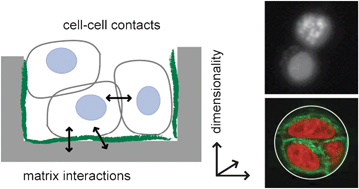Engineered 3D environments to elucidate the effect of environmental parameters on drug response in cancer†
Abstract
Traditional in vitro models used for the development of anti-cancer

* Corresponding authors
a
ETH Zürich, Wolfgang-Pauli-Str. 10, Zürich, Switzerland
E-mail:
mirren.charnley@mat.ethz.ch
Fax: +41-44-633 10 27
Tel: +41-44-633 63 48
Traditional in vitro models used for the development of anti-cancer

 Please wait while we load your content...
Something went wrong. Try again?
Please wait while we load your content...
Something went wrong. Try again?
 Fetching data from CrossRef.
Fetching data from CrossRef.
This may take some time to load.
Loading related content
